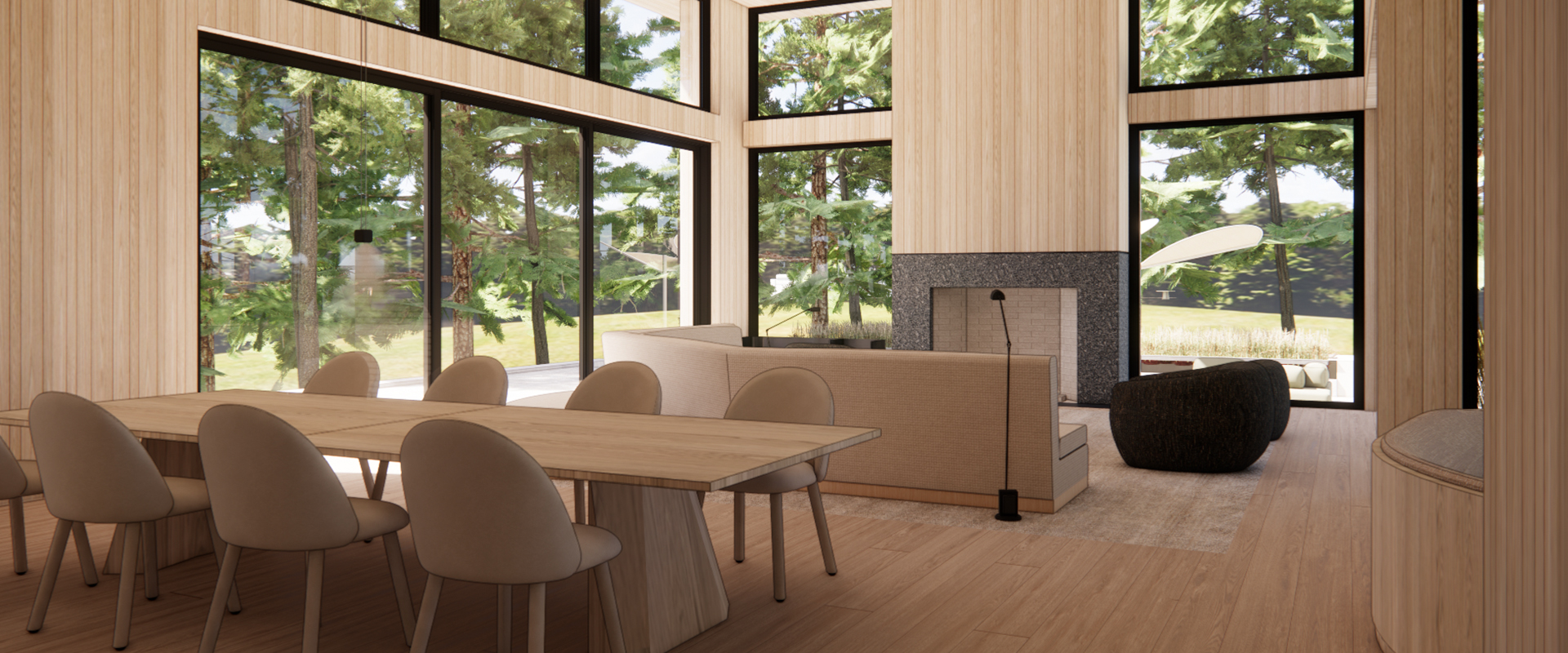No products in the cart.
creating a walk through
My passion has always been rooted in the bones of a space—the architectural essence that defines the character of a home. Since joining abd in 2023, I have collaborated closely with the team from the early design stages and transforming architectural plans into highly detailed 3D models. The process is time-consuming–building an entire 3D model, with all the details intact, can take several weeks. However, the value is immeasurable.
In any project, understanding the design intent is crucial. Whether I’m working on a residential home or a commercial space, I begin by reviewing the plans, looking at the layout, and understanding the orientation of the building. Being on-site plays a big role in the rendering process due to the level of detail that is required. Is the home north-facing or south-facing? Does it sit in an urban setting or surrounded by a forest of trees? These details matter when I’m rendering a space because the light shifts and shape the atmosphere of a space depending on its location.
Once these elements are modeled, I then create photorealistic renderings and walkthroughs, which give both our clients and team a true sense of how the space will look and feel. Rendering allows the client to visualize the space in a way that a 2D drawing never could. It’s not just about seeing the layout of the room but feeling the atmosphere—how the light fills the space, how the textures play off each other, and how the room flows. These are all critical aspects of the design that we can capture through the renderings.
It’s not just the client who benefits from these technologies, though. As designers, we also rely on these renderings and models to see how our ideas translate into reality. For example, in a current project, the moldings and wood tones were paramount to achieving the right look. We spent a lot of time fine-tuning the profiles and modeling them accurately in the 3D space. It wasn’t just about choosing the right materials but also ensuring that the scale and proportions were correct, down to the smallest detail.
The technology we use helps bridge the gap between what’s on paper and what the space will ultimately become. We are on our way to offering our clients virtual reality (VR), and this is something we are very excited about. This will allow our clients to put on goggles and walk through their home in real time. This kind of immersion gives clients a true sense of what their home will feel like when it’s complete. We believe VR will elevate the entire design process and clients won’t need to rely on 2D plans or verbal descriptions. Instead, they’ll be able to experience their home in a way that feels real.
In the end, my role is about making sure that every space we create at abd is conveyed so that it feels authentic to its environment and speaks to the client’s vision. It’s a collaborative process, from the architecture to the finishes, and it’s always exciting to see how it all comes together.
Ayana


